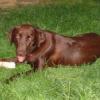Research updates (I did another literature pass, and quite a few more spermidine studies became open access). Rather than search upthread, here's a dump:
Eisenberg et al, 2009. Induction of autophagy by spermidine promotes longevity. Nature cell biology, 11(11), p.1305.
administration of spermidine, a natural polyamine whose intracellular concentration declines during human ageing, markedly extended the lifespan of yeast, flies and worms, and human immune cells.
Ramot et al, 2011. Spermidine promotes human hair growth and is a novel modulator of human epithelial stem cell functions. PLoS One, 6(7), p.e22564.
We have studied the effects of the prototypic polyamine, spermidine (0.1–1 mM), on human scalp hair follicles and human hair follicle epithelial stem cells in serum-free organ culture. Under these conditions, spermidine promoted hair shaft elongation and prolonged hair growth.
Pretreatment with spermidine prior to LPS treatment significantly inhibited excessive production of NO and PGE2 in a dose-dependent manner, and was associated with down-regulation of expression of inducible nitric oxide synthase (iNOS) and cyclooxygenase-2 (COX-2). Spermidine treatment also attenuated the production of pro- inflammatory cytokines, including IL-6 and TNF-a,
Spermidine or spermine, given in drinking water for 28 days, significantly prevented the increased osteoclast surface/bone surface ratio and the reduced bone volume following ovariectomy in mice.
Minois et al, 2012. Spermidine promotes stress resistance in Drosophila melanogaster through autophagy-dependent and-independent pathways. Cell death & disease, 3(10), p.e401.
Spermidine improves both survival and locomotor activity of the fruit fly Drosophila melanogaster upon exposure to the superoxide generator and neurotoxic agent paraquat...Spermidine failed to confer resistance to paraquat-induced toxicity and locomotor impairment in flies deleted for the essential autophagic regulator ATG7 (autophagy-related gene 7). Spermidine treatment did also protect against mild doses of another oxidative stressor, hydrogen peroxide, but in this case in an autophagy-independent manner.
Twenty-four week old Jc1:ICR male mice were fed one of three experimental chows containing different polyamine concentrations. Lifetime intake of high polyamine chow, which had a polyamine content approximately three times higher than regular chow, elevated polyamine concentrations in whole blood, suppressed age-associated increases in pro-inflammatory status, decreased age-associated pathological changes, inhibited age-associated global alteration in DNA methylation status and reduced the mortality in aged mice. ...increased polyamine intake was associated with a decreased incidence of colon tumors in BALB/c mice after 1,2-demethylhydrazine administration; 12 mice (60%) in the low polyamine
group developed tumors, compared with only 5 mice (25%) in the high polyamine group. However, increased polyamine intake accelerated the growth of established tumors;
Gupta et al, 2013. Restoring polyamines protects from age-induced memory impairment in an autophagy-dependent manner. Nature neuroscience, 16(10), pp.1453-1460.
Spermidine-fed flies showed enhanced autophagy (a form of cellular self-digestion), and genetic deficits in the autophagic machinery prevented spermidine-mediated rescue of memory impairments.
Spermidine supplementation normalized aortic pulse wave velocity, restored NO-mediated endothelium-dependent dilation and reduced nitrotyrosine, superoxide, AGEs and collagen in old mice. These effects of spermidine were associated with enhanced arterial expression of autophagy markers, and in vitro experiments demonstrated that vascular protection by spermidine was autophagy-dependent.
flies’ age-dependent decline of aversive olfactory memory, an established model for age-induced memory impairment, can be rescued by both pharmacological treatment with spermidine and genetic modulation that increases endogenous polyamine levels. Notably, we find that this effect strictly depends on autophagy,
administration of the naturally occurring polyamine spermidine, which declines continuously during aging in various species, alleviates a series of PD-related degenerative processes in the fruit fly Drosophila melanogaster and the nematode Caenorhabditis elegans, two established model systems for PD pathology. In the fruit fly, simple feeding with spermidine inhibited loss of climbing activity and early organismal death upon heterologous expression of human a-synuclein, which is thought to be the principal toxic trigger of PD. In this line, administration of spermidine rescued a-synuclein-induced loss of dopaminergic neurons, a hallmark of PD, in nematodes.
anacardic acid, curcumin, garcinol and spermidine, all of which reduce the acetylation level of cultured human cells as they induce signs of increased autophagic flux. We performed a screen to identify the acetyltransferases whose depletion would activate autophagy and simultaneously inhibit mTORC1. The knockdown of only two acetyltransferases (among 43 candidates) had such effects: EP300... and NAA20.... anacardic acid, curcumin, garcinol and spermidine all inhibited the acetyltransferase activity of recombinant EP300 protein in vitro.
oral supplementation of the natural polyamine spermidine extends the lifespan of mice and exerts cardioprotective effects, reducing cardiac hypertrophy and preserving diastolic function in old mice. Spermidine feeding enhanced cardiac autophagy, mitophagy and mitochondrial respiration, and it also improved the mechano-elastical properties of cardiomyocytes in vivo, coinciding with increased titin phosphorylation and suppressed subclinical inflammation. Spermidine feeding failed to provide cardioprotection in mice that lack the autophagy-related protein Atg5 in cardiomyocytes. In Dahl salt-sensitive rats that were fed a high-salt diet, a model for hypertension-induced congestive heart failure, spermidine feeding reduced systemic blood pressure, increased titin phosphorylation and prevented cardiac hypertrophy and a decline in diastolic function, thus delaying the progression to heart failure. In humans, high levels of dietary spermidine, as assessed from food questionnaires, correlated with reduced blood pressure and a lower incidence of cardiovascular disease.
spermidine changed neither the size of the plaque nor its cellular composition. However, spermidine treatment significantly reduced necrotic core formation (6.6±0.5% vs. 3.7±0.5% in aortic root, P=0.0008) and lipid accumulation inside the plaque (27±3% vs. 17±1% oil red O positivity in thoracic aorta, P=0.017). In vitro experiments showed that macrophages, unlike vascular smooth muscle cells (VSMCs), are relatively insensitive to autophagy induction by spermidine. Along these lines, spermidine triggered cholesterol efflux in autophagy-competent VSMCs (5.7±1.2% vs. 8.7±0.2%, P=0.0118), but not in autophagy-deficient Atg7F/F SM22α-Cre+ VSMCs or macrophages. Analogous to the experiments in vitro, spermidine affected neither necrosis nor lipid load in plaques of Atg7F/FSM22α-Cre+ ApoE-/- mice.
Spermidine coupled with exercise could attenuate D-gal-induced aging-related atrophy of skeletal muscle through induced autophagy and reduced apoptosis with characteristics of more autophagosomes, activated mitophagy, enhanced mitochondrial quality, alleviated cell shrinkage, and less swollen mitochondria under transmission scanning microscopic observation. Meanwhile, spermidine coupled with exercise could induce autophagy through activating AMPK-FOXO3a signal pathway with characterization of increased Beclin1 and LC3-II/LC3-I ratio, up-regulated anti-apoptotic Bcl-2, down-regulated pro-apoptotic Bax and caspase-3, as well as activated AMPK and FOXO3a.
Edited by Darryl, 08 September 2017 - 10:55 PM.


































































